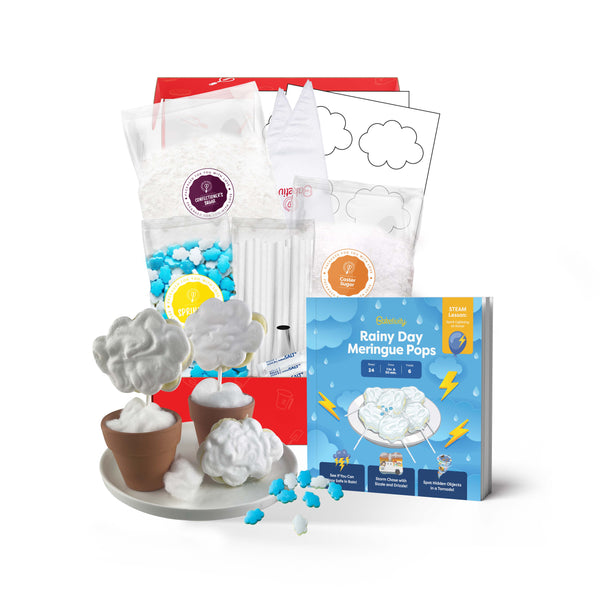Homeschooling has become an increasingly popular option for many families seeking a
customized education for their children. If you are considering homeschooling your child, it is essential to understand the available curriculum options and how to choose the best one for your child's individual needs. In this article, we will explore the rise of homeschooling, the benefits it offers, and guide you through the process of identifying your child's learning style. We will then delve into selecting the right homeschool curriculum and provide tips for creating a structured homeschooling schedule. Finally, we will discuss the importance of
incorporating extracurricular activities to ensure a well-rounded educational experience. Let's get started!
Understanding Homeschooling: A Comprehensive Overview
With the rise of homeschooling, many parents are now opting to take control of their child's education. This educational approach offers flexibility, customization, and the ability to tailor lessons to match your child's interests and learning style. Let's explore the reasons why homeschooling has gained popularity in recent years.
Homeschooling is not a new concept but has gained significant traction in recent years. Parents are increasingly drawn to the idea of being more involved in their child's education, allowing for a more personalized learning experience. This shift in mindset has led to a surge in resources and support networks for homeschooling families, making it a viable option for many.
The Rise of Homeschooling
Over the past decade, homeschooling has seen a significant increase in adoption. According to data from the US Department of Education, the number of homeschooled students has more than doubled over the past 20 years. This shift is mainly due to the desire for stronger family bonds, the ability to provide personalized instruction, and concerns about the quality of traditional school systems.
Furthermore, advancements in technology have made homeschooling more accessible than ever before. Online resources, virtual classrooms, and educational apps have revolutionized the way parents can deliver lessons and engage with their children's learning. This blend of traditional teaching methods with modern tools has contributed to the widespread acceptance and success of homeschooling.
Benefits of Homeschooling
There are numerous advantages to homeschooling that make it an attractive option for many families. Homeschooling allows for a more flexible schedule, individualized attention, and the ability to focus on your child's specific interests and talents. Moreover, it provides a safer learning environment and enables parents to instill their values and beliefs into their child's education.
Additionally, homeschooling fosters a strong sense of community among families who choose this path. Support groups, co-ops, and extracurricular activities specifically designed for homeschoolers create a rich social environment for children to interact, learn, and grow together. This sense of belonging and camaraderie further enhances the homeschooling experience for both parents and students.
Identifying Your Child's Learning Style
Understanding your child's learning style is crucial when it comes to choosing the right homeschool curriculum. Each child has a unique way of processing information, and tailoring their education to match their learning style can greatly enhance their learning experience. Let's explore the different learning styles and how they relate to homeschooling.
As parents and educators, it is essential to recognize that children may exhibit a combination of learning styles rather than fitting neatly into one category. Observing your child's preferences and tendencies in various learning situations can provide valuable insights into their individual learning style.
Visual Learners and Homeschooling
Visual learners grasp information best through visual aids such as diagrams, charts, and videos. When homeschooling a visual learner, incorporating visual materials and
hands-on activities can be highly effective in facilitating their understanding.
Utilizing colorful flashcards, educational posters, and interactive online resources can further engage visual learners and help them retain information more effectively. Creating a visually stimulating learning environment at home can cater to the needs of visual learners and make the educational experience more enriching.
Auditory Learners and Homeschooling
Auditory learners learn best through listening and verbal interaction. When homeschooling an auditory learner, incorporating discussions, audiobooks, and educational podcasts can enhance their learning experience.
Encouraging auditory learners to participate in storytelling, debates, and group activities can foster their communication skills and deepen their understanding of various subjects. Providing opportunities for them to explain concepts in their own words can also reinforce their learning and boost their confidence in expressing ideas verbally.
Kinesthetic Learners and Homeschooling
Kinesthetic learners thrive in a hands-on and active learning environment. When homeschooling a kinesthetic learner, incorporating movement, experiments, and manipulatives can keep them engaged and facilitate their understanding.
Setting up a dedicated learning space where kinesthetic learners can explore through tactile experiences, such as building models, conducting science experiments, or engaging in role-playing activities, can cater to their learning preferences. Allowing them to take frequent breaks for physical movement and incorporating outdoor learning opportunities can also support their learning style and overall academic growth.
Choosing the Right Homeschool Curriculum
Selecting the right homeschool curriculum is a crucial step in providing your child with a quality education. The following factors should be considered when choosing a curriculum:
Factors to Consider When Choosing a Curriculum
-
Learning Style: Ensure the curriculum aligns with your child's learning style for optimal engagement.
-
Academic Goals: Identify your child's academic goals and choose a curriculum that supports and challenges them.
-
Teaching Approach: Consider your teaching style and whether the curriculum provides the necessary teaching resources and guidance.
-
Flexibility: Evaluate the curriculum's flexibility and adaptability to accommodate your child's interests, strengths, and weaknesses.
-
Cost: Take into account the budget you have allocated for homeschooling and find a curriculum that is within your financial means.
Top Rated Homeschool Curriculum Options
While we cannot mention specific companies, several reputable homeschool curriculum providers offer a wide range of options to cater to various needs and budgets. Researching and comparing curriculum reviews, sample materials, and customer feedback can help you identify the top-rated homeschooling options that align with your educational goals.
Creating a Structured Homeschooling Schedule
Establishing a structured homeschooling schedule is essential to maintain a productive and balanced learning environment. Here are some key considerations:
The Importance of Routine in Homeschooling
A consistent routine provides structure and familiarity, allowing your child to develop good study habits and a sense of discipline. Establishing a daily schedule that includes specific blocks of time for each subject and regular breaks ensures a productive learning environment.
Tips for Creating a Balanced Homeschooling Schedule
- Set clear expectations and goals for each day to maintain a sense of purpose and progress.
- Break down subjects into manageable chunks to prevent overwhelm and promote focused learning.
- Incorporate breaks and physical activities to keep your child engaged and energized.
- Flexibility is essential - adapt the schedule as needed to accommodate your child's learning pace and interests.
- Regularly assess the effectiveness of the schedule and make necessary adjustments to optimize learning.
Incorporating Extracurricular Activities in Homeschooling
Engaging in extracurricular activities is an essential aspect of a well-rounded education. Homeschooling allows for flexibility in incorporating extracurricular activities that align with your child's interests and talents. Here's why it matters:
The Role of Extracurricular Activities in Homeschooling
Extracurricular activities foster social interaction,
build self-confidence, and develop essential life skills. They provide opportunities for your child to explore their passions,
develop new talents, and connect with other like-minded individuals.
Ideas for Homeschooling Extracurricular Activities
There is a wide range of extracurricular activities that homeschoolers can participate in, such as joining sports leagues, art classes, music lessons, local community groups, volunteer work, or even starting their own clubs or projects. The key is to explore activities that resonate with your child's interests and align with your family's values and goals.
Conclusion
Homeschooling offers a unique opportunity to provide a tailored education for your child. By understanding the rise of homeschooling, identifying your child's learning style, choosing the right curriculum, establishing a structured schedule, and incorporating extracurricular activities, you can create the best homeschool curriculum class for your child's education. Remember, every child is different, and finding the right approach may require some trial and error. Embrace the journey, and enjoy the incredible experience of homeschooling!
Start Your Family Baking Adventure with Baketivity!
Ready to turn your kitchen into a fun and educational bakery? Join the Baketivity Baking Club and embark on a delightful journey of family bonding, creativity, and learning. Our baking kits, infused with quality ingredients and the joy of discovery, are designed to provide you with everything you need to create lasting memories. Embrace the art of baking and nurture your child's culinary talents today.
Join the Baking Club and let's bake up some fun!




